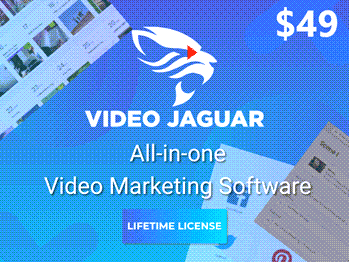How To Master Storytelling For Video Marketing
Video Jaguar -
Do you want to know what the oldest marketing technique out there is?
It’s storytelling.
If you’re not using it in your video marketing, you should. And in this video, you will learn key techniques and advice that will help you master the art of storytelling for your business.
Subscribe to our channel:
And visit our agency:
___
SO WHY DO STORIES WORK?
Stories appeal to the emotive, subconscious parts of the brain that make most of our decisions.
Fun Fact! Stories have been scientifically proven to raise both cortisol and oxytocin.
Why is this relevant?
Cortisol increases our focus and attention and oxytocin increases levels of empathy. If you can relate to the story your brand is telling – EMPATHY – and you’re paying attention – CORTISOL – you’re more likely to remember it and choose it over other companies.
HOW DO WE TELL A GOOD STORY?
1. DEFINE TARGET AUDIENCE
You need to know who your customer is to create a story that connects with them.
Maybe your product appeals to parents, business people, educators – what are their lives like? Are they represented in your story? How does it relate to them?
To show you how to reach your audience, we are going to look at STRUCTURE and RELATA-BILITY.
2. STRUCTURE
The simplest storytelling structure sees a character overcoming a problem and improving their lives as a result.
So – think of the problems your customer is facing that your product would solve.
For example, let’s say you sell office chairs.
Your customer, John.
Had a PROBLEM: back pain.
He tried everything, a chiropractor, physio, that heat rub, cream, stuff, but that back pain kept on coming back.
It affected his ability to do the things he liked, play with his kids, play football with his friends, so on and so forth.
Then a rep from your office chair company came to his office and told him about how the right office chair could help your back.
John hadn’t even thought about office chairs. He decided – why not – he’d see if your chair can make the difference.
He didn’t expect it, but it was the answer he needed.
Hey presto –
Back pain – removed!
John overcame his problem and his life is improved.
Moreover, your customers will be able to picture themselves in John’s position because the problems are relatable and common – they apply to everyday life.
An easy way to think about this story is to remember its key components:
Character: We have our core character.
High stakes: Something important is at stake, not only John’s back, but his happiness, his family’s happiness and therefore his life at large.
Discovery: This story shows John discovering something new, allowing your customer to also discover something new.
Normal, Explosion, New Normal: This is a better description than Beginning, Middle and End, because it shows us what that means in a story.
Normal – John’s normal life
Explosion – John discovers office chair
New Normal – John’s new life after office chair
We have a satisfying end to the story, where we see a resolution.
3. RELATABILITY
John’s story is specific enough to your customer, but abstract enough for the customer to put themselves in the story.
If the solution was good enough for your story’s character, it could be good enough for your audience, but only if they can picture themselves in John’s position.
The emotive side of John’s story allows them to relate to how much this problem is affecting their life.
But we don’t need to know everything about the specifics of John’s back pain, the exact muscular issues, how the back pain is affecting the strategic plan of his football team, what his Grandma thinks…It’s too much, frankly.
Having said that, don’t be afraid to add some unique touches. Give John’s family and foot-ball team real names, for instance.
Use creative, unique details rather than mundane ones to bring colour to your story and stop it from becoming cliché.
Here are some things a story is NOT:
• A mission statement. It’s great to have goals, but where are my characters? Where are my high stakes? Where is my tasty conclusion? It’s like getting having a starter when you could have a three course meal.
• A tagline. An award-winning movie is not its IMDB description. Need I say more?
• A timeline. I’m not saying don’t tell me your history, I’m saying don’t tell it to me like it’s your CV.
Watch out for these storytelling mistakes.
DON’T Allude to Your Story – actually tell it!
DON’T Let the story overshadow your business
DO Use the power of firsts – the first time something happens is often the most power-ful, and these can be a great way of engaging audiences in a story. The first time you fall in love, your first day at school, your first camera – you get the idea.
DO Make the ending relate to the beginning. It’s great when a story drops something at the beginning and comes back it at the ending…(read more at source)
Video Creation Software
Lifetime License Deal
CREATE MARKETING VIDEOS:
EXPLORE VIDEO MAKERS:
The post How To Master Storytelling For Video Marketing appeared first on Video Jaguar.
from Video Jaguar https://ift.tt/wtB0anm
via Video Marketing Blog

Comments
Post a Comment